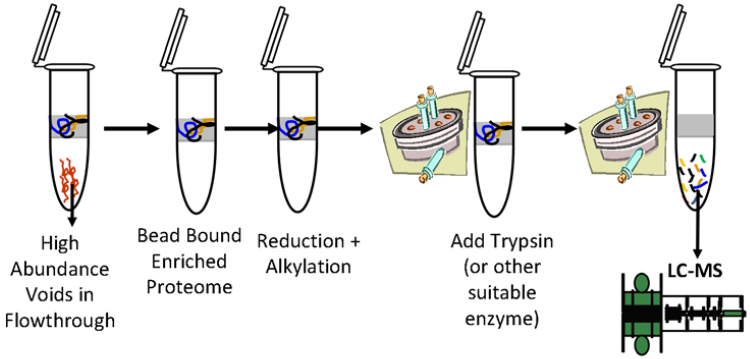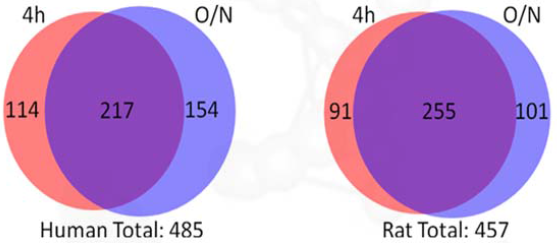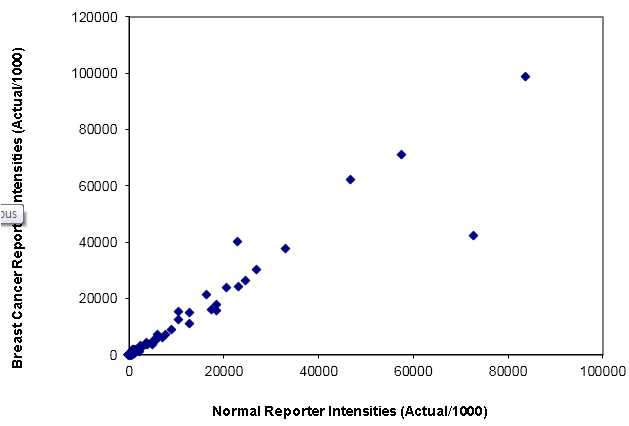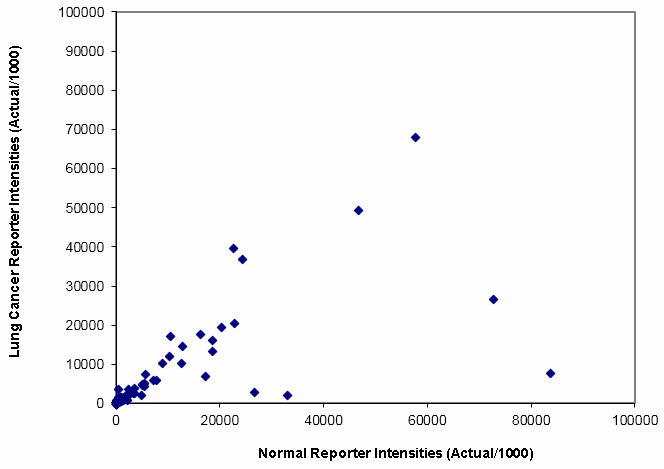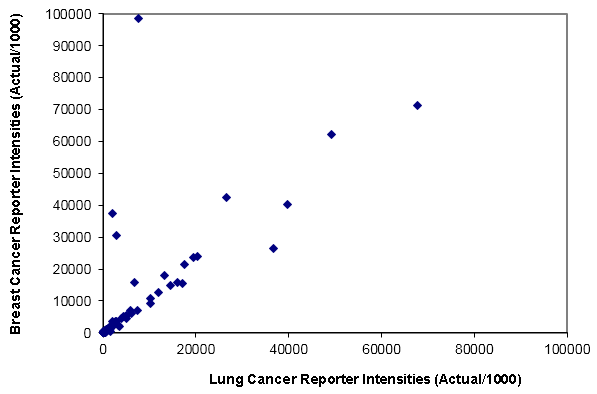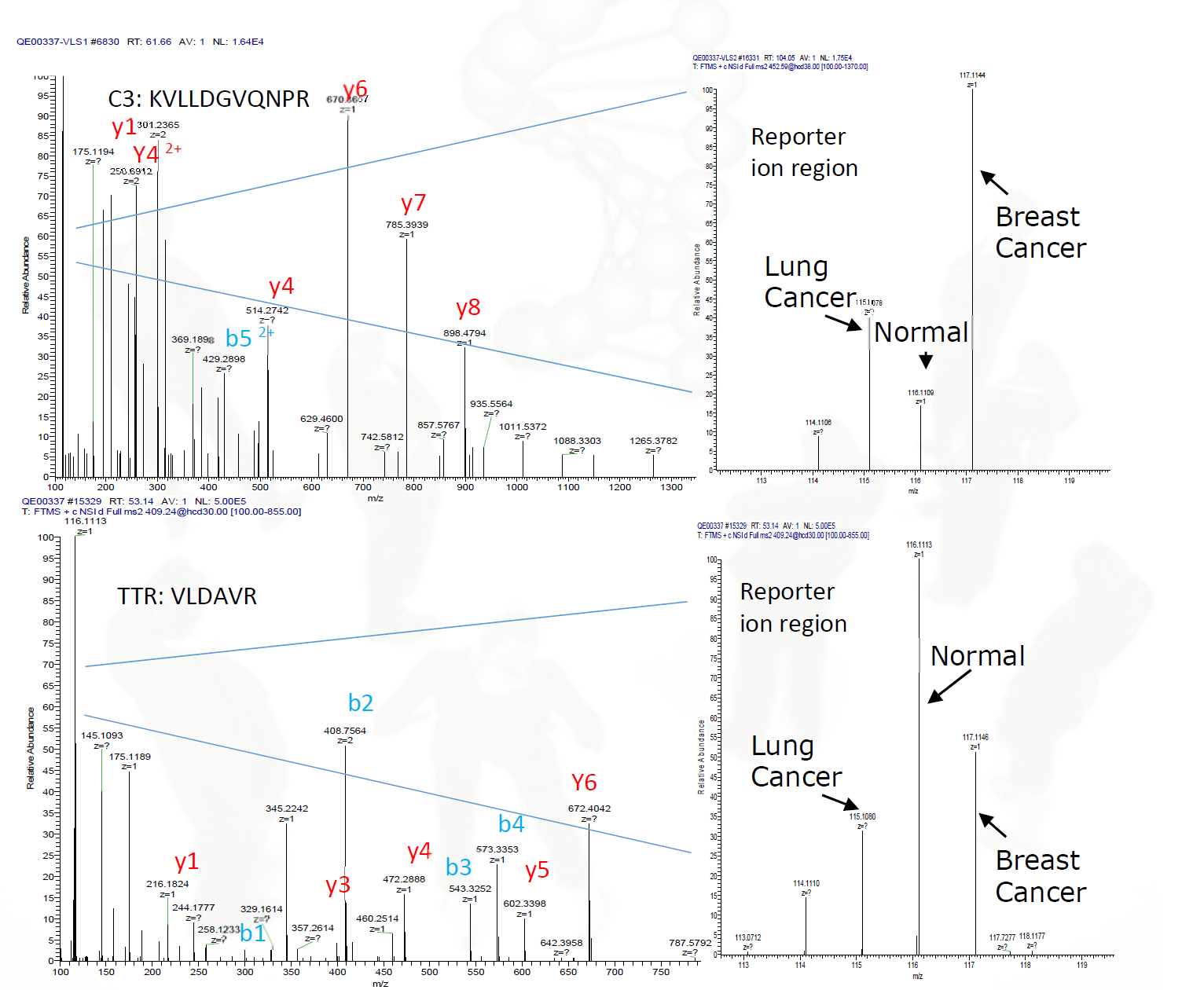AlbuVoid™ LC-MS On-Bead for serum proteomics
본문
|
AlbuVoid™ LC-MS On-Bead for serum proteomics Albumin Depletion Plus Low Abundance Serum Protein Enrichment With Optimized On-Bead Digestion for LC-MS Label and Label-free Analyses
• Albumin and transferrin voids in flow-through >95%, with <30 minute bind/wash microfuge protocol • Low abundance enrichment equivalent or better than hexa-peptides or immuno-affinity • Consumable, cost-effective, no column regeneration or cross-contamination • Species agnostic; human, rat, mouse, goat, sheep, porcine and bovine sera have been tested • Trypsin digestion on the bead • Seamless workflows and unique proteolytic efficiencies - No in-gel digests, no solution digests, no C18 desalting, more consistent, reproducible results - Compatibility with quantitative label (i.e., iTRAQ) and label-free LC-MS methods
AlbuVoid™ LC-MS On-Bead is an albumin depletion reagent kit. It removes albumin from serum and plasma samples while concentrating low abundance proteins on the beads. Consequently, the low abundance serum proteins are enriched. It is ideal for applications involving LC-MS discovery and targeted proteomics.
The AlbuVoid™ beads are derived from a silica-based library of individual mixed-mode polymeric ligands. The library was designed to facilitate weak binding of proteins, allowing for progressive enrichment of the low abundance proteome, with specialized voiding properties empirically derived. The AlbuVoid™ beads have been adapted to a protocol specifically designed for LC-MS applications whereby the low abundance proteome adsorbed to the bead is proteolytically degraded to its peptide constituents. In this way AlbuVoid™ LC-MS On-Bead integrates low abundance enrichment, with Trypsin (or other suitable protease) on-bead digestion, in a simple, highly efficient and seamless workflow for LC-MS discoveryand quantitative analyses.
Fig. 1. High abundance depletion + digestion efficiency + simple workflow = Better LC-MS output
The total AlbuVoid™ LC-MS On-Bead proteins were compared for human and rat sera at two different digestion times, 4 hours and overnight (O/N). Note that many identified proteins overlap while certain populations of proteins were only observed in one or the other digest time. Please refer Application Report (PDF).
Fig. 2. Comparison of 4 hours & overnight digestion times
iTRAQ labeled peptides from two representative disease serum samples
The reporter intensity signals were added together for each of the iTRAQ labeled peptides supporting the associated protein identification. Each of the additive peptide reporter intensities were then plotted for each protein comparing the following sample pairs: Fig. 3. Breast Cancer Serum Proteins vs. Normal Serum Proteins. Fig. 4. Lung Cancer Serum Proteins vs. Normal Serum Proteins. C. Breast Cancer SerumProteins vs. Lung Cancer Serum Proteins.
Fig. 3. Breast cancer serum proteins vs. normal serum proteins
Fig. 4. Lung cancer serum proteins vs. normal serum proteins
Fig. 5. Breast Cancer Serum Proteins vs. Lung Cancer Serum Proteins
Big size (Click) Fig. 6. The AlbuVoid™ LC-MS On-Bead product and protocol is compatible with both label and label-free quantification of peptides/proteins. In the example below, iTRAQ labeled peptides from two representative proteins observed to be differentially quantified in comparing pooled sera from normal and cancer patients. |
Ordering informations
|
Catalog No. |
Product Name |
Size |
|
AVB-MS05 (PDF) |
AlbuVoid™ LC-MS On-Bead |
5 preps |
|
AVB-MS10 (PDF) |
10 preps |
▣ 관련 페이지 ; Biotech Support Group
- 이전글RNA Extraction Strip Card (12 x 8 sample strips) 15.06.01
- 다음글Cellular Mechanism, DNA Damage & Repair II 15.05.12
댓글목록
등록된 댓글이 없습니다.
